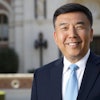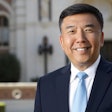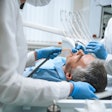
Inadequate access to oral healthcare has divided the dental community over whether more dental schools are needed. Some believe that healthcare reform will create more need for dentists to treat underserved populations, but others argue that huge debt loads will prevent graduates from going where they're needed most: rural areas or inner city clinics that treat Medicaid patients.
In a special session at the American Dental Education Association (ADEA) meeting in March, Dominick DePaola, DDS, PhD, dean of academic affairs at Nova Southeastern University's College of Dental Medicine, debated the issue with David Nash, DMD, professor of pediatric dentistry at the University of Kentucky College of Dentistry.
According to Dr. DePaola, the U.S. needs more dental schools because changes in the healthcare system mandated by healthcare reform will create a greater need for more dentists. Some 20 new dental schools are in various stages of consideration or development in the U.S., according to the ADA.
“Flooding the market with more providers is not the solution.”
— Robert Madden, DDS
"A tremendous amount of resources will be going into federally qualified health centers [FQHCs]," Dr. DePaola said in an interview with DrBicuspid.com. "They're starting to hire people at reasonable salaries. And part of the strategy is to forgive part of students' loan debts if they work in underserved areas."
But Dr. Nash contends that loan forgiveness programs are paid for with government funds, which will be difficult to maintain now that lawmakers are looking to cut subsidies for all programs. He also argued that there is no evidence of a direct relationship between the number of dentists and the adequacy of access to care.
"There was inadequate access to oral healthcare when the profession experienced a significant 'busyness problem' in the mid-80s to mid-90s, as a result of a recession and the previous expansion of class sizes," Dr. Nash said.
Flooding the market with more providers is not the solution, according to Robert Madden, DDS, who has lectured at the University of Nebraska-Lincoln for 35 years, and as part of the ADA's success lectures program regarding practice management for 25 years.
"I think we have to look at how we're going to pay for things," he said. "Having an adequate workforce is only one of the barriers to access to care."
The significant increases in class sizes that have already taken place in existing dental schools will greatly add to the number of new dentists in the U.S., Dr. Nash said, noting that the number of dentists graduating annually from existing schools will grow to 4,983 in 2014, compared with 4,171 in 2001.
According to an ADA report, "Breaking Down Barriers to Oral Health for All Americans: The Role of Workforce," issued in February 2011, more dental schools are unnecessary because the current number of dental school graduates will more than compensate for retiring baby boomer dentists. The ADA estimates that the number of new dentists will grow from the current level of 180,000 to 200,000 by 2030.
"The real problem is where the dentists are in relation to underserved populations," the report noted.
But a 2011 report by the Pew Center on dental shortages found that more than 31 million Americans are underserved due to a shortage of dentists, and that 4,000 areas nationwide are federally designated as having shortages of dental professionals.
"The nation would need 6,645 new dentists to remove these shortage designations and ensure that all communities had enough providers to meet the needs of residents," the report stated.
Other barriers
Whether there are more new dental schools or more new dentists doesn't eliminate the fact that new graduates are typically burdened with $250,000 to $300,000 in debt, Dr. Nash said, which could limit their ability to practice in underserved areas.
“Healthcare reform will mean that a tremendous amount of resources will be going into federally qualified health centers, and they're starting to hire people at reasonable salaries.”
— Dominick DePaola, DDS, PhD, Nova Southeastern University
"It will not be an option for them to practice in rural and inner city areas where people are most in need of oral healthcare," Dr. Nash said. "Nor to care for individuals with public dental insurance, to whatever extent such insurance may exist."
However, Dr. DePaola pointed out that a significant number of dental school graduates have gone to work in community health centers. "There are really good incentives to work at such places now, and the need is incredible," he said. "There are lots of people who really believe in responding to need, who are not always driven by dollars."
More and more often, Dr. DePaola said, medical schools are sending students to get experience in local health centers. "Data show that when they've worked in those communities, they go back," he said. "It's a supply and demand issue. When demand is high enough, people will migrate to places where they can respond to demand. It's clear that it's beginning to take place."
Some 91% of dental schools now require that students do rotations in clinics or in underserved communities, the ADA report noted.
Another factor is whether there are enough qualified faculty members to adequately staff an expansion of dental schools. ADEA data indicate that there are consistently between 350 to 400 open faculty positions at dental schools across the U.S., according to Dr. Nash.
But Dr. DePaola said that Nova Southeastern has had no problem filling vacant positions. Specialists such as orthodontists can be hard to recruit for teaching positions because they can make much more in private practice, but Nova has just hired several specialists, he said. To compensate for the income disparity, most schools allow faculty members to maintain private practices, he added.
Dr. Nash decries the practice at some new dental schools to use private practitioners as teachers, saying they are not qualified to be university faculty members.
Dr. DePaola disagreed, saying they provide valuable real-life experience. Also, because they are usually part-time teachers, it's less expensive for the school than paying for full-time employees' benefits.
In the long run, the solution to addressing access-to-care issues across the U.S. will likely be found in a comprehensive care environment that has all the healthcare professions working together: medical, dental, nursing, and pharmacies, according to Dr. DePaola.
"Not only do we need more dentists, I think we need a new type of dentist who can function as part of a healthcare team," Dr. DePaola concluded. "The whole concept of a team approach is the most critical thing."



















